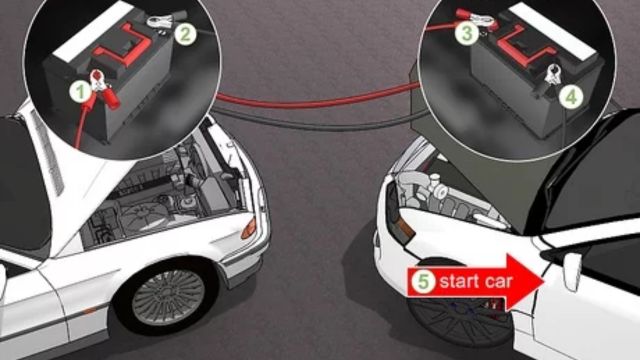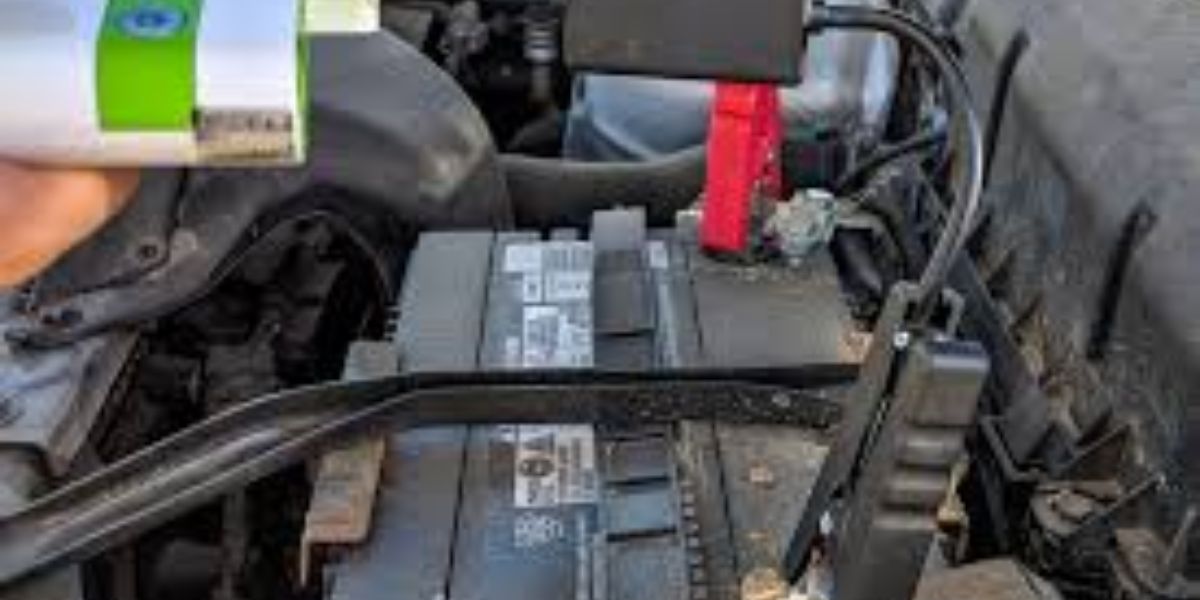Discover how to start a car with a dead battery when there’s no one to help. Finding your car won’t start because of a dead battery is a situation every driver has faced at least once.
And let’s be honest, it will likely happen again as long as combustion engines are around. Ideally, you should always keep a set of jumper cables in your trunk. They cost just over 12 dollars on Amazon and can be a real lifesaver.
The Car Won’t Start and No One to Help You
However, if you’re reading this article, you’re probably already stuck with a dead battery and no one to help. Don’t worry; we’ve got you covered. In this post, we’ll explain various methods to start a car with a dead battery, so you can find the one that works for you and get back on the road.

One of the most effective solutions is to use a jump starter. This portable device can provide the necessary power to start your car without needing another vehicle. Here’s how:
- Ensure the jump starter is fully charged.
- Connect the positive (red) clamp to the positive terminal of the battery.
- Attach the negative (black) clamp to an unpainted metal surface on the car’s frame.
- Turn on the jump starter and try to start your car.
Do You Know – Reducing Traffic! New York State Plans to Remove 28,000 Cars from Its Streets
If your car has a manual transmission, you can also try the push-start method. Follow these steps:
- Turn the ignition key to the “on” position.
- Put the car in second gear.
- Have someone push the car until it gains some momentum.
- Release the clutch quickly to start the engine.
A portable battery pack is another useful tool to start your car. Similar to a jump starter, it provides the necessary power to the battery. Simply connect it to the battery terminals and try starting the car.
If all else fails, don’t hesitate to call for roadside assistance. Most insurance policies include this service, and it can save you a lot of time and hassle.
Remember, a dead battery is a common issue, but with these methods, you’ll be prepared to handle it like a pro. Keep a set of jumper cables and consider investing in a jump starter or battery pack to avoid future inconveniences. A Car Battery Jump Starter is Essential if Your Car is Automatic though.
Why You Need a Car Battery Jump Starter for Automatic Vehicles
With a heavy heart, we must inform you that this is one of the few reliable methods to start an automatic car, alongside using jumper cables, of course. As we’ve discussed above, automatic cars—whether they have a torque converter or a dual-clutch—have a transmission that only engages once the car’s electrical systems are up and running.
How Does a Car Battery Jump Starter Work?
A car battery jump starter is a device that connects to the terminals of your car battery, providing a powerful electrical boost strong enough to start the vehicle. This method is more about prevention than a cure. Therefore, if you own a car with an automatic transmission and you don’t have one of these devices, you’re taking a significant risk. Summing up:
- Automatic Cars: Their transmission only engages when electrical systems are operational.
- Jump Starters: These devices provide the necessary electrical boost to start your vehicle.
- Prevention: Owning a jump starter is a preventive measure to avoid being stranded.
In conclusion, having a car battery jump starter is crucial for anyone with an automatic vehicle. Don’t leave yourself vulnerable; equip yourself with this essential tool to ensure you’re never caught off guard.
Jump starting a car with external devices can be a lifesaver, especially when you’re stranded with a dead battery. In this guide, we’ll explore two effective methods for jump-starting your car, whether it’s manual or automatic. Let’s dive into the details!
Jump Starting with a Dedicated Device
These handy devices cost between 70 and 100 euros and are equipped with a pair of small clamps and two cables. They work like a charm and are quite simple to use. Just follow these easy steps:
- Connect each clamp to the corresponding terminal on the battery (positive to positive, negative to negative).
- Turn on the ignition of your car.
That’s it! Your car should start up smoothly.
Jump Starting with an External Battery
This method is a variation of the previous one and is versatile enough to work with both manual and automatic cars. It involves using any battery-powered tool, such as a drill. Here’s how you can do it:
Alabama Daycare Drama: Three-Year-Old Finds Way to Walmart for Toys and Treats
- Find a battery-powered tool.
- Attach metallic objects (like cables, screws, or any other conductive elements) to each terminal of the tool’s battery.
- Touch each terminal to the corresponding terminal on the car battery (positive to positive, negative to negative).
- Turn the ignition key.
Your car should start up, but be cautious as this method carries some risks. The batteries used in tools often operate at a higher voltage than car batteries. This means you could potentially blow a fuse if the voltage difference is significant. Use this method only in emergencies or if the voltage is close to the car battery’s normal values.
Important Considerations
- Ensure you connect the positive and negative terminals correctly to avoid damage.
- Check the voltage of the external battery before attempting this method.
- Only use this method if you are confident in handling electrical components.
With these tips in mind, you can confidently jump-start your car and get back on the road in no time. Remember, safety first! Now let’s move on to starting your car by pushing it.
Getting Your Manual Car Started by Pushing
If your car has a manual transmission, you can try to force-start it by pushing. This method is quite popular for starting a car, but it’s important to note that it only works with vehicles equipped with a manual gearbox.
The mechanism behind this technique is simple. Usually, the engine’s rotation is transmitted to the transmission and then to the wheels. However, if you engage a gear and push the car, you’ll make the engine turn over, initiating the starting process.
Steps to Push-Start Your Car
Whether you’re alone or with company, you can follow these steps to get your car started. It’s more fun with family or friends, but in an emergency, you can manage it on your own. Here’s what you need to do:
- Turn the key to the first position to activate the ignition.
- Put the car in neutral and release the handbrake.
- Find a comfortable and stable spot to grip the car (if you’re pushing from the driver’s position, grab the front pillar of the vehicle) and start pushing. Having help is ideal.
- Once the car gains some momentum, jump in, press the clutch, engage first gear, and quickly release the clutch.
- If the car doesn’t start in first gear, you can try second gear, especially if the car skids.
- On very wet surfaces, you might need to use third gear, though it will be much harder.
As soon as you release the clutch pedal, the car should start. Remember to press the clutch again immediately to avoid stalling.
Additional Tips
Keep in mind that you might need several attempts since various factors can increase the difficulty of this process. Patience and persistence are key to successfully push-starting your car.
Starting a diesel car can be more challenging than starting a gasoline car. If the engine has a large displacement, it will also be slightly more difficult. And finally, if the engine is completely cold, it will be harder compared to an engine that has been running just moments ago.
Letting the Car Roll Down a Slope
Letting the car roll down a slope can be a viable alternative, but it must be done with great care.
This is a variation of the method we discussed earlier, and it can be useful if you find it difficult to push the car on your own or if you don’t have any assistance.
A Quick Summary on Starting a Car on a Slope
Here is a brief overview with steps on how to start a car on a slope. first, we’ll provide a short summary of this method. However, we must emphasize the importance of using common sense before attempting this, as it can be dangerous.
- Make sure the slope is not too steep.
- Ensure there are no obstacles in the path.
- Keep the car in neutral until it gains enough momentum.
- Once the car is moving, engage the appropriate gear to start the engine.
Using this method requires caution and a clear understanding of the process to avoid any potential risks.
Starting your car manually can be a lifesaver in certain situations, especially when your battery is dead. Here’s a step-by-step guide to help you get your car moving again.
Manual Car Start Method
Follow these steps to manually start your car:
- Insert the key into the ignition and turn it to the first position.
- Ensure the car is in neutral and release the handbrake.
Using the Car’s Momentum
Using the car’s natural decline, you can start the engine by following these instructions:
- If the car is rolling forward, engage the clutch and shift into first gear. Quickly release the clutch pedal.
- If the car skids too much, try the same method with second or third gear.
Rope Start Method
This last method is pure survival and is not widely known. Shoutout to YouTuber HRom for explaining it in one of his videos. The method itself is somewhat hazardous but can be your last resort in an emergency.
The principle is exactly the same as that used by chainsaws and brush cutters with gasoline engines. What we aim to do is to spin the starter motor through one of the wheels, though this only works with cars that have a manual transmission. Here’s how you can achieve this:
Steps to Start a Car Without a Battery
First, raise the car using a jack so that one of the drive wheels is suspended in the air. Make sure the handbrake is applied. Wrap a strong cloth or rope around the tire, similar to how you would wind up a spinning top. If you don’t have a rope, you can cut one of the seat belts with a knife. The strip should allow the wheel to rotate in its natural direction when you pull it.
- Insert the key into the ignition and turn it halfway, but do not start the car.
- Engage second gear and disconnect all non-essential electrical systems (radio, air conditioning, lights, etc.).
- Give the rope a strong pull. It usually doesn’t work on the first try, but after several attempts, the car should start. You can orient the wheel outward to make the maneuver easier.
Additional Tips
And there you have it—the most interesting methods to start a car without a battery. If, while reading this, a person with a car appears with jumper cables in the trunk, don’t forget to check out our post explaining how to jump-start a car with battery cables.




